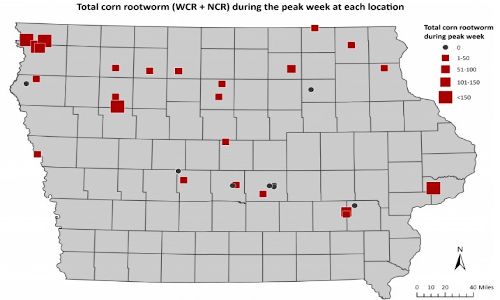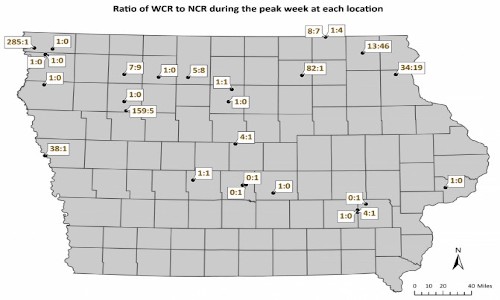
Figure 4 shows the ratio of WCR:NCR during the peak week at each location. A ratio greater than one indicates more WCR than NCR were reported at that location. Seven locations reported more NCR than WCR: these were located in Clay, Kossuth, Polk, Washington and Winneshiek counties. We suspect these ratios are changing, and we intend to monitor their change over time as we continue this project in the future.

We appreciate our volunteer cooperators for helping with the first year of this project. We hope to continue this monitoring effort into the future and have more participation across the state.
Disclaimer: The data we collected from individual fields cannot be used to make region-wide predictions of corn rootworm activity or density. Populations of corn rootworm are localized to individual fields and are based on past and current management practices. Corn rootworms overwinter in Iowa cornfields, and movement is typically restricted to within fields or between neighboring fields. WCR, specifically, only disperses about 130 feet (40 meters) per day.
Sampling protocol: We mailed traps to volunteer cooperators at the end of June. Cooperators established a transect of four traps, the first placed 165 feet into the field and the rest placed every 165 feet along a single row. Cooperators would return a week later, count the number of each species present on each sticky trap, and replace each sticky trap with a new one. They set their first traps in the field the week of July 13 and continued sampling for one month. We aimed to capture the peak emergence of beetles in the field, though emergence can occur for a period of 6-8 weeks. Normally, multiple transects would be established within a single field and traps would be monitored for eight weeks.
Source : iastate.edu